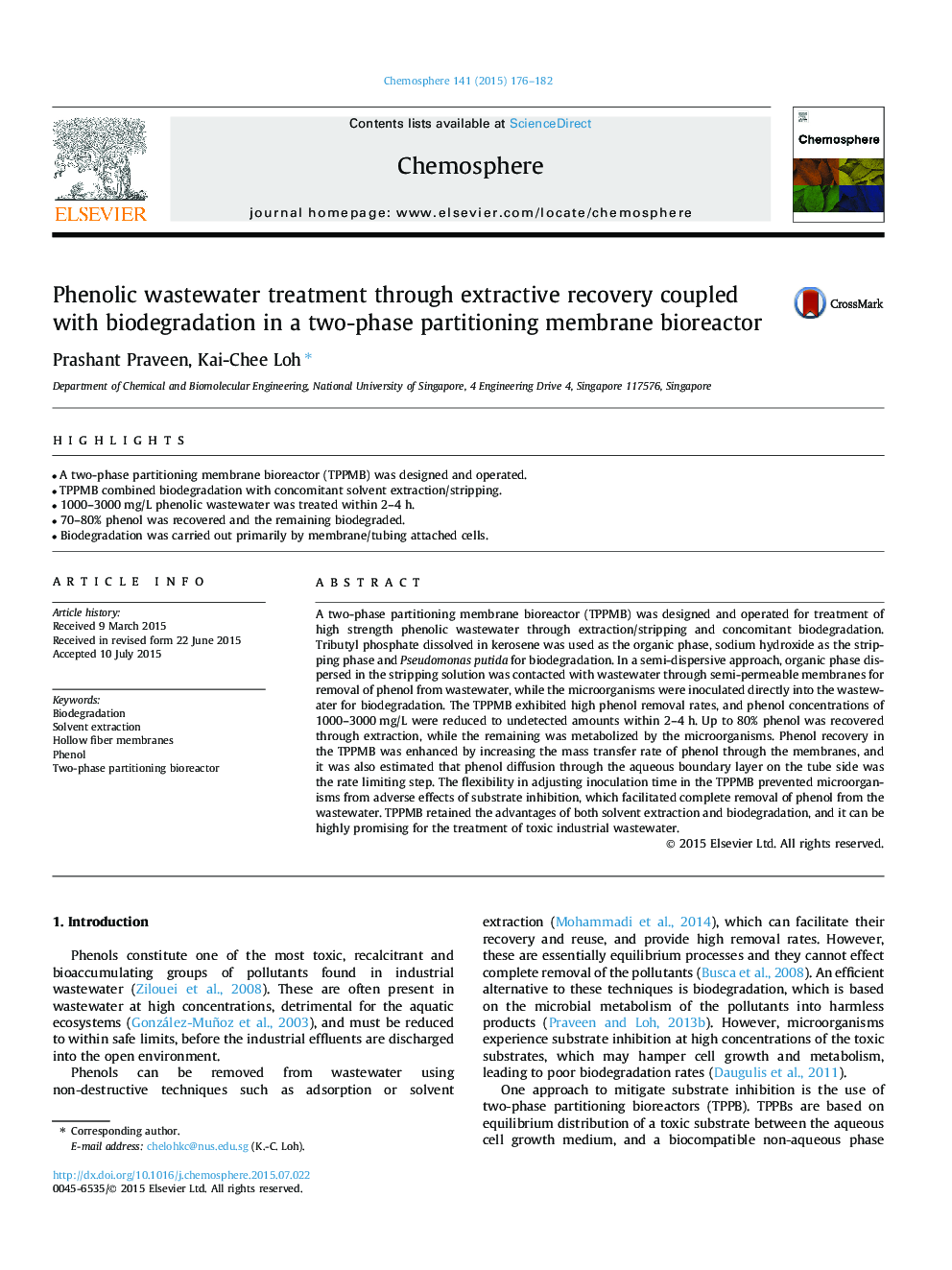| Article ID | Journal | Published Year | Pages | File Type |
|---|---|---|---|---|
| 6307362 | Chemosphere | 2015 | 7 Pages |
Abstract
A two-phase partitioning membrane bioreactor (TPPMB) was designed and operated for treatment of high strength phenolic wastewater through extraction/stripping and concomitant biodegradation. Tributyl phosphate dissolved in kerosene was used as the organic phase, sodium hydroxide as the stripping phase and Pseudomonas putida for biodegradation. In a semi-dispersive approach, organic phase dispersed in the stripping solution was contacted with wastewater through semi-permeable membranes for removal of phenol from wastewater, while the microorganisms were inoculated directly into the wastewater for biodegradation. The TPPMB exhibited high phenol removal rates, and phenol concentrations of 1000-3000Â mg/L were reduced to undetected amounts within 2-4Â h. Up to 80% phenol was recovered through extraction, while the remaining was metabolized by the microorganisms. Phenol recovery in the TPPMB was enhanced by increasing the mass transfer rate of phenol through the membranes, and it was also estimated that phenol diffusion through the aqueous boundary layer on the tube side was the rate limiting step. The flexibility in adjusting inoculation time in the TPPMB prevented microorganisms from adverse effects of substrate inhibition, which facilitated complete removal of phenol from the wastewater. TPPMB retained the advantages of both solvent extraction and biodegradation, and it can be highly promising for the treatment of toxic industrial wastewater.
Keywords
Related Topics
Life Sciences
Environmental Science
Environmental Chemistry
Authors
Prashant Praveen, Kai-Chee Loh,
